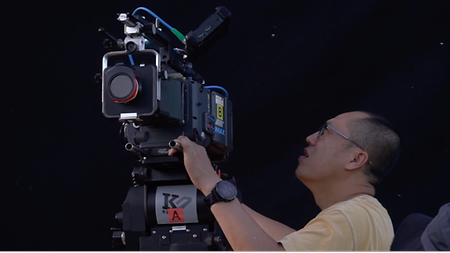Interview with Boxue Wang, cinematographer on “The Yinyang Master”
How did you choose the equipment for the film?
I knew large format was going to be the trend for feature films; it just has so many advantages. However, when I first joined the production in 2018, the ALEXA LF hadn’t been released yet. At the time, I was thinking about using the ARRI ALEXA XT with Panavision lenses. “The Yinyang Master” is a historical fantasy movie and that combination could have provided a vintage look. Then the production date was delayed and I had the chance to go to NAB and experience the ALEXA LF and ARRI Signature Prime lenses in person last spring. In June, the ALEXA LF came to China so I went to the ARRI office for some testing. Unfortunately, the ARRI Signature Primes weren’t available at that time so I could only reserve the camera. I decided on the camera first, then I began to think about lenses. In the end, we mixed ARRI lenses and Cooke lenses.
What were your experiences with the ALEXA LF camera during testing?
It felt really good. First of all, I’m a big fan of ARRI products. I used them for my very first project and have never regretted the decision. I have tried some other brands but I only choose ARRI cameras for shooting feature films. We were at the end of the analog era when I was in film school; my thesis was even shot on film. Personally, I love the color of film and all of ARRI’s digital cameras are able to maintain that kind of color. In terms of the ALEXA LF, the size of sensor directly affects the quality of the image. The angle of view is wider than the S35 sensor so the depth of field also changes. You probably can’t tell the difference when you’re watching from a small screen but it’s so obvious on a big screen. Even though, for now, all film theaters in China are still using 2K projection, but this will definitely change to 4K in the future. Higher resolution is a trend; the image has so many details.
Can you share with us some information about the lighting design of “The Yinyang Master”?
My gaffer this time was Yong Zhang and it was our first time working together. He has a lot of experience. He was the gaffer of “Mojin: The Lost Legend, Battle of Memories,” and “American Dreams in China.” 90 percent of the film was shot on sound stages. Sometimes we needed to have light setups ready in five sound stages the same time, due to the many scene changes and actor scheduling issues. Whenever a stage was prepared, actors had to be there right away to shoot. We needed many lights and it was an enormous project setting them all up. A lighting diagram was drawn up for every single scene and each light was numbered. All in all, we had over 400 lights, including S360, S120, S60 and S30 SkyPanels. They were very convenient and very easy to control, plus they offered so many lighting effects. We used a digital control system which had its own department. All the lights were connected to the console for quick access and adjustment.
